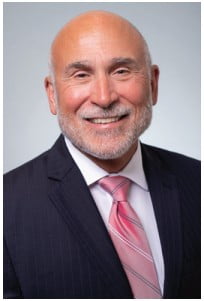Dr. James A. Smith, Jr., says that making informed decisions about your technologies can lead to practice growth.
“A new idea is first condemned as ridiculous and then dismissed as trivial, until finally, it becomes what everyone knows.”
— William James (American philosopher 1842-1910)

I often think of the quote above as I look back over my professional career and choices when considering the adoption of new technology into my endodontic practice. I first heard of the quote in 1995 during a presentation at Dr. Gary Carr’s Pacific Endodontic Research Foundation (PERF). In the face of intense skepticism, Gary’s deep conviction and resolve inspired him, along with the help of trusted colleagues, to train hundreds of endodontists in the use of Microscopic Endodontic Techniques — changing our specialty for the better. But consider this: It was more than a decade after 1995 that microscope training became widely incorporated into our endodontic postgraduate programs.
As a specialty, we are slow to change and adopt innovative technologies. This is true for multiple reasons; not the least is that change is uncomfortable. Change is uncomfortable in disrupting our routine, the extra time required to learn a new way to “do what we do,” and the necessary financial commitment to purchase innovative technology. These are all valid concerns but should not prevent us from investigating what might help us do a better job for our patients and make our jobs easier and more rewarding after gaining proficiency.
I recall three examples that illustrate this in my practice lifetime. The first was the microscope, which was the hardest to adopt. After being in practice for 13 years, the learning curve was steep. Learning technology like the dental operating microscope (DOM) while running a busy practice was difficult, but persistence and perseverance have paid great dividends. The second was cone beam computed tomography (CBCT). I studied and considered the cost/benefit for a couple of years before “pulling the trigger.” Now I cannot fathom practicing without CBCT and its usefulness in diagnosis, treatment planning, and assessing endodontic outcomes (healing). The third is GentleWave® disinfection and cleaning of the root canal system. This technology has proven in my office to better the patient experience (i.e., little to no post-op issues and reduction of actual treatment time), to reduce rotary instrumentation use, and to allow for converting almost every case to a single visit.
My point is this: As clinicians, we owe it to ourselves and our patients to investigate innovative technology and consider the benefits and cost (time and money). Only then can we make an informed decision as to whether to adopt it into our practice. Do your due diligence. Talk with trusted colleagues who have successfully adopted whatever modern technology you may consider, and if possible, visit their offices to see how this might benefit you and your patients. You owe it to yourself and your patients to keep an open mind and consider what might make your professional life more rewarding.
Dr. James A. Smith Jr.
Make better informed decisions, and achieve more with Endodontic Practice US! Read our inspiring and educating articles here: https://endopracticeus.com/
James A. Smith Jr., DMD, graduated from the University of Alabama School of Dentistry in 1980 and received his postgraduate certificate in Endodontics from the same institution in 1982. He is the founder of Advanced Endodontics in Birmingham, Alabama. Dr. Smith has been in private practice for 39 years and recently retired as an Adjunct Assistant Professor from the Department of Endodontics at the University of Alabama at Birmingham School of Dentistry.
Stay Relevant With Endodontic Practice US
Join our email list for CE courses and webinars, articles and more..

